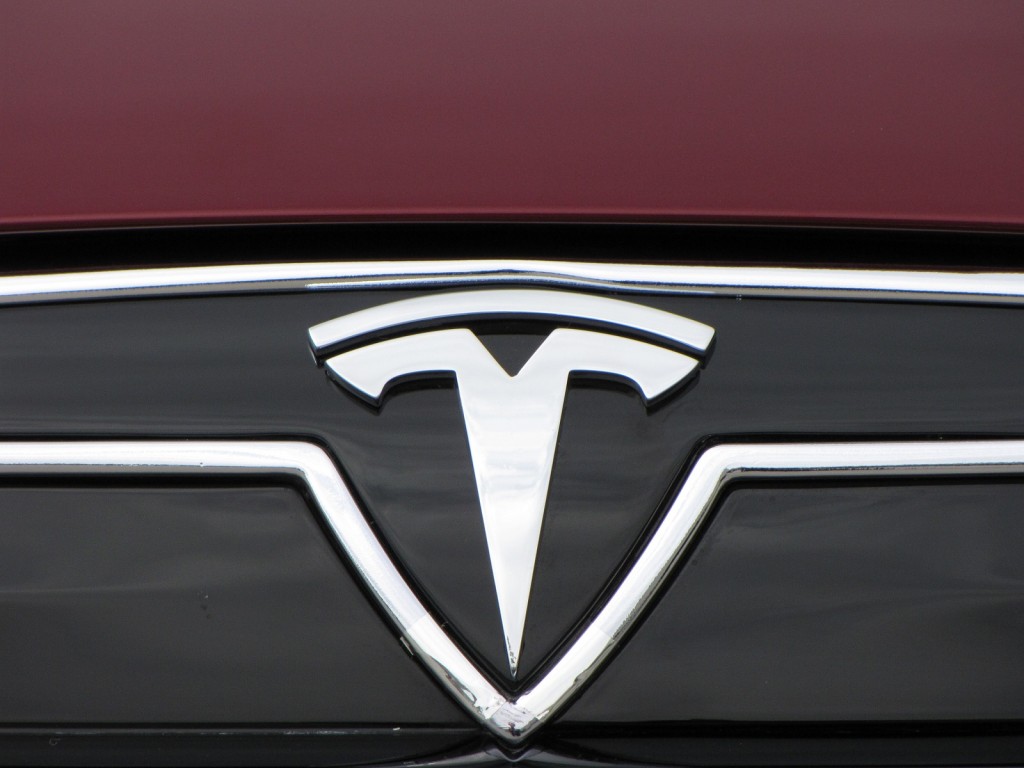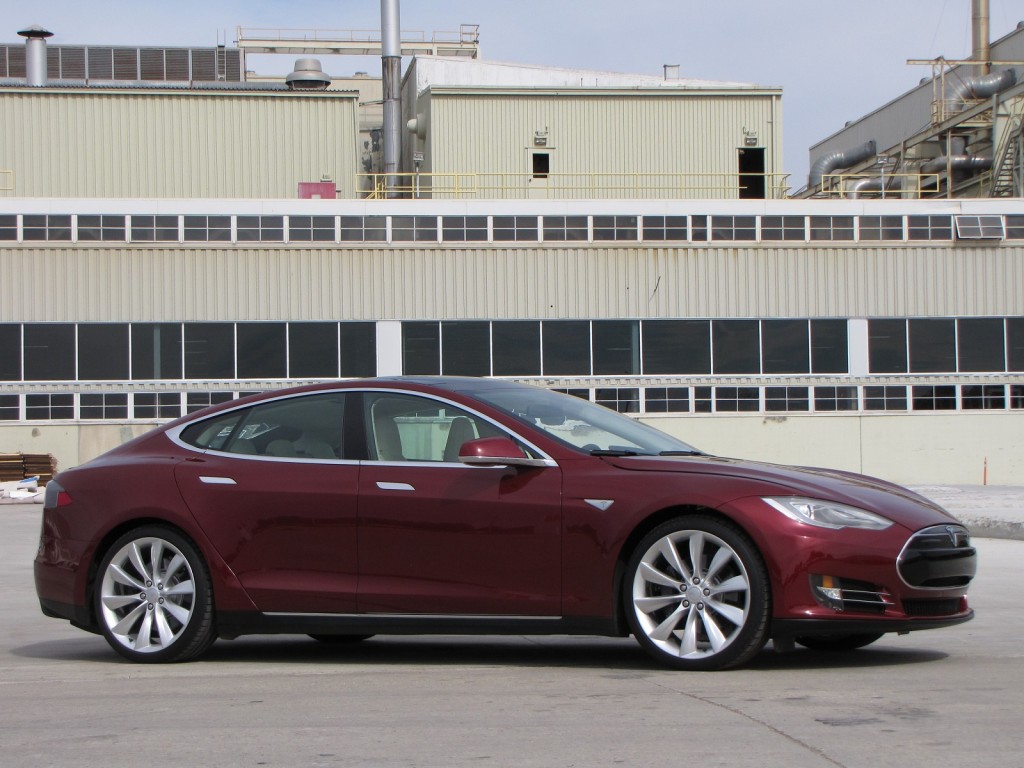After a flurry of press events last October that included rides in 2012 Tesla Model S prototypes, Tesla Motors went mostly silent until it unveiled its Model X crossover last month.
But the electric crossover won't generate any cash for the Silicon Valley startup carmaker over the next year or two. That role belongs to the Model S sedan.
Tesla is working intensively on getting its all-electric luxury sport sedan finalized and ready for production, it says, with deliveries to paying customers sometime during the second half of this year.
So now that the Model X design has been revealed, it's a good time to return to the Model S sedan and assess both its prospects and those for Tesla Motors [NSDQ:TSLA] as a whole.
We turned to respected industry analyst Aaron Bragman, of IHS Automotive, for an evaluation of the company's current and long-term prospects.
We asked him five questions.
(1) Is the 2012 Tesla Model S for real?
Yes. I've seen the prototypes, the production line, the tools, and the plant. Tesla is nearly ready to start production; it will build the Model S, and in 2012 too.
But several factors remain that work against the company, not the least of which is a major competitive disadvantage against efforts being made by major automakers, despite the massive influx of cash that Tesla has enjoyed.
(2) Can Tesla sell 30,000 Model S sedans per year?
The $57,400-and-up $64,900-and-up 2012 Tesla Model S will be a curious proposition for a luxury-car buyer. It enters a segment (mid-size luxury sport sedans) that doesn't see huge volumes--and one in which brand loyalty tends to be strong.
2012 Tesla Model S beta vehicle, Fremont, CA, October 2011
Tesla likes to suggest that the Model S is unique and will set itself apart from competition that includes stalwarts like the BMW 5-Series, Mercedes-Benz E Class, and a dozen other models.
Perhaps it will—if Tesla's sales goals are not terribly ambitious, they could be met. It's possible to sell a few thousand of anything in this country, on novelty value alone. IHS Automotive forecasts that if Tesla can get the car to market, it will likely sell at least a few thousand.
But the idea that Tesla could sell tens of thousands of Model S sedans in the U.S. is folly. The most popular vehicles in that segment only sell a few tens of thousands themselves, with some models--Audi A6, Jaguar XF, Lexus GS--well below 10,000 sales a year.
Remember that hybrid vehicles themselves, which are far easier to own and operate than pure electric cars, are still just 2 to 3 percent of the total U.S. market. And a recent Deloitte & Touche research note suggests that whether car buyers actually want electrified vehicles is still a matter of some debate.
(3) What's Tesla's core competence?
2012 Tesla Model S beta vehicle, Fremont, CA, October 2011
Although it's less publicly recognized, Tesla has revenue streams beyond just selling cars. Because of the proprietary systems they've developed and patented--everything from motors to controllers to battery packs to software--they can also generate income providing turnkey electric conversions to existing automakers.
In fact, that's how they're generating their revenue right now.
Given the increasing mandate from California alone to put zero-emission vehicles on the road, soon, Tesla may find itself very busy providing limited-production electric models to automakers--just as it already does for Toyota, Smart, and Mercedes-Benz.
(4) What can we learn?
The 2012 Tesla Model S is one of the most vertically integrated cars I've ever seen. I wasn't aware how much of the technology in the Model S was developed in-house.
Tesla makes nearly everything on the Model S itself. The exceptions are some of the trickier bits, like the pedal box and steering column, which it gets from Daimler. Tesla even makes its own molded plastic parts, using machinery left by Toyota at the Fremont, California, assembly plant.
2012 Tesla Model S beta vehicle, Fremont, CA, October 2011
I suspect some of that self-reliance stems from finding the existing base of automotive parts suppliers uninterested--or unwilling to work with Tesla for anything other than exorbitant fees. That may have forced Tesla to go it alone.
On the plus side, that means Tesla can make very rapid design changes. On the minus side, it means the company's costs are not terribly negotiable, as there isn't competition among suppliers for the needed components. In other words, the fixed cost of Component Z is whatever price Tesla itself can bring it to fruition for.
(5) Will Tesla survive?
In a nutshell, I am much more confident about Tesla's ability to survive now than I was this time last year.
At that point, I thought the idea that Tesla could survive without outside help from a major enterprise--likely another automaker--was remarkably uninformed.
I still think that as an automaker, Tesla needs to have a partner to survive long-term. But it has actually demonstrated that it can find partners who are interested in further tie-ups, and also that selling its own cars is not the only avenue to making money.
I remain skeptical, however, about the market chances for the Model S and the actual demand for a $57,400-plus $65,000-plus all-electric sedan from a relatively unknown brand, when compared to the modern and future competition.
2012 Tesla Model S beta vehicle, Fremont, CA, October 2011
In its best year, Porsche sold just under 8,000 Panamera sedans through 200 dealers. Tesla plans to sell how many Model S sedans through 55 dealers next year--without much in the way of inventory? Even Fisker has simply stopped providing guidance on its anticipated sales.
And sales of a few thousand Model S sedans, even fully loaded at $85,000 or more, will not generate anywhere near the revenue necessary to repay the U.S. Department of Energy loans Tesla has received--much less fund additional products, pay employees and suppliers, and keep the lights on.
We think, however, that Tesla would make a very interesting possibility as an electric luxury brand that shares space in Lexus showrooms. Thus far, Lexus hybrid vehicles have largely fallen short of customers' (and even dealers') expectations--with the possible exception of the latest compact hatchback, the CT 200h.
Put Tesla in there as a green alternative to Lexus, similar to the way Toyota is expanding the Prius model into a full lineup, and you may have a compelling scenario for a way that the Tesla brand and products could survive long-term.
+++++++++++













